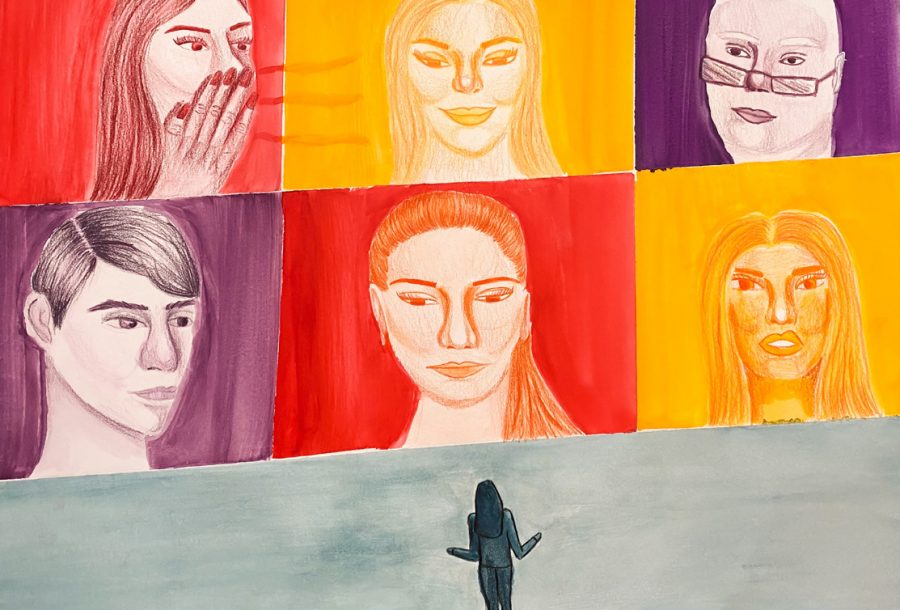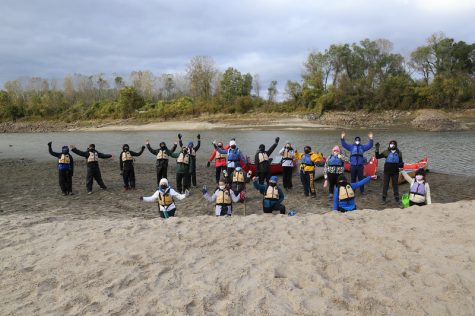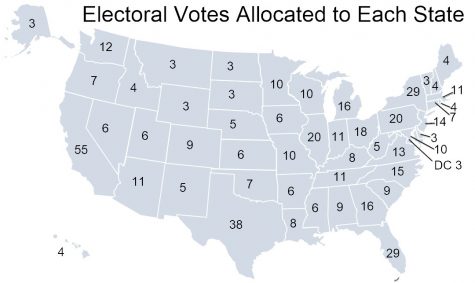Speaking on Zoom can be Terrifying, Here’s How We can Help
October 1, 2020
We have all experienced the awkwardness of interaction without physical social cues on Zoom this spring and fall. Yet Zoom interruptions are not just uncomfortable – they are a serious equity issue. Groups including females, POC (people of color), and people with social anxiety and other mental health issues are being silenced over Zoom. There is more to participation than just speaking up when you know the answer. Burroughs, as a community currently using Zoom, needs to reevaluate how we are contributing to participation inequities.
Of course, there is nothing new about this issue. According to a study of workplace meetings by Yale psychologist Victoria Brescoll, the more frequently male executives spoke up, the more competent they were perceived to be. The opposite was true for female executives. The same people forced into silence in person are also silent on Zoom and often to a greater extent. “Our participation grades have become a much larger part of our overall grade,” one anonymous student explains. “However participation has become much harder. We have to worry about not interrupting someone, not over-dominating the class, and. . . feeling judged for the wrong answer.” One student listed participation as their highest concern during online learning, saying it was “much harder” over Zoom. A Spanish student also expressed her frustrations saying, “Class participation is especially important. My Spanish teacher speaks only in Spanish but moves as fast as if we are in person. There is no time to ask a question and if you don’t understand something, you often miss the whole instruction.”
We, as students and teachers, have to work together to address this. Obviously what will work for a discussion-based English class is very different from what will work for a lecture-based Science class, but several students and I believe there is enough variety in solutions for every class. One thing we all agreed on is that asking students to physically raise their hands is ineffective since most teachers are not able to see all students at the same time, especially when they are screen sharing. Additionally, encouraging students to just “shout out the answer” often highlights the same voices, over and over again. As Madeline Buchowski (‘23) describes, “It is so easy to. . . get interrupted” if a less talkative student tries to join the conversation.
Most of my classes rarely use the chat function, if at all. I think we’re missing out. First, the chat is a great way to show agreement with someone else’s statement without having to speak up. It is hard to know if what you are saying is being well received over Zoom when nods are easily missed and verbal recognition is much more of an endeavor. Second, one way I personally have seen the chat feature utilized to encourage widespread participation is in Zooms with the Sunrise Movement. If a person has something to say, they put an asterisk in the chat immediately. That way, whoever is facilitating the discussion knows who wants to speak up and will call on people in the order their asterisks are “stacked” in the chat. This method is called stacking and in my experience both as a facilitator and participant, it is useful to make sure no one gets left behind before moving on, not to mention it is much more efficient because there are no long pauses between different speakers. If the facilitator is screen-sharing, they assign a “stack-minder” to watch the chat (a role that could easily be filled by a designated student in a classroom setting).
One solution I have found helpful for students finding themselves over-participating is to count to 10 in your head before jumping in so that there is time for other students to formulate their thoughts. One of the best ways to keep participation balanced for teachers of discussion-based classes, like History, is to give students the discussion questions at the beginning of the class and allow a few minutes for everyone to brainstorm their responses. Not only does this allow less confident students to put together a strong answer, but responses are also more well-thought-out. For classes where it is impossible to compile questions ahead of time, the blue-hand icon is a great way for teachers to see everyone who wants to participate and call on whoever has spoken the least, as opposed to who speaks up first.
Finally, one area where students differed in opinions was breakout rooms. They can be a lower-stakes way to talk about the material, but they can also be more stressful than a larger classroom scenario. Two ways of improving students’ breakout room experiences would be clearly defining the topics to be discussed in the breakout room and creating “medium-sized groups of around 4 people.”
We are all, students and teachers alike, affected by who speaks in our classes. We need to discuss what we can do to help those who are not speaking.





